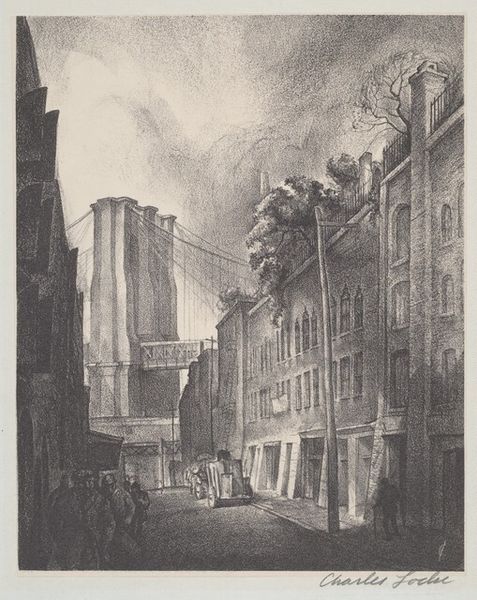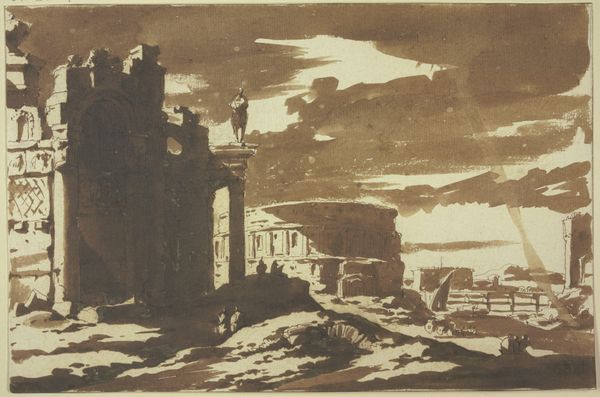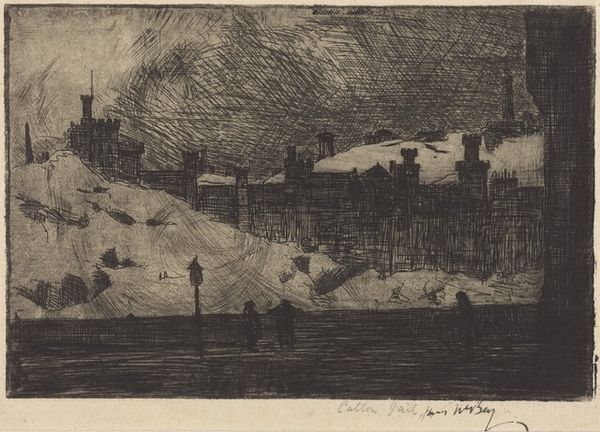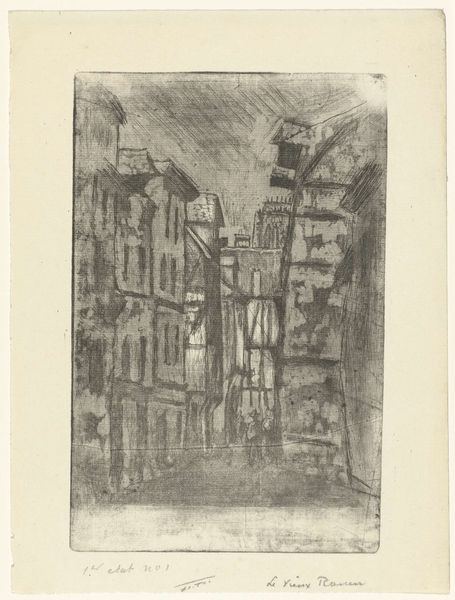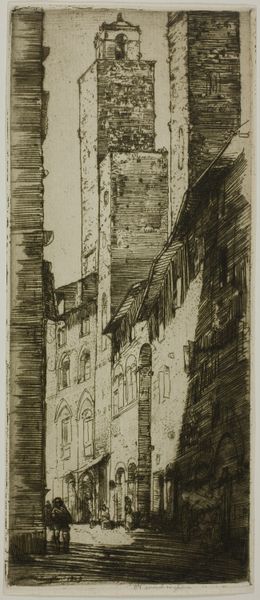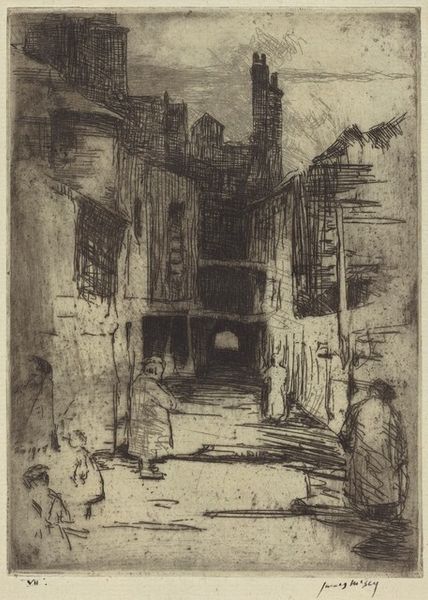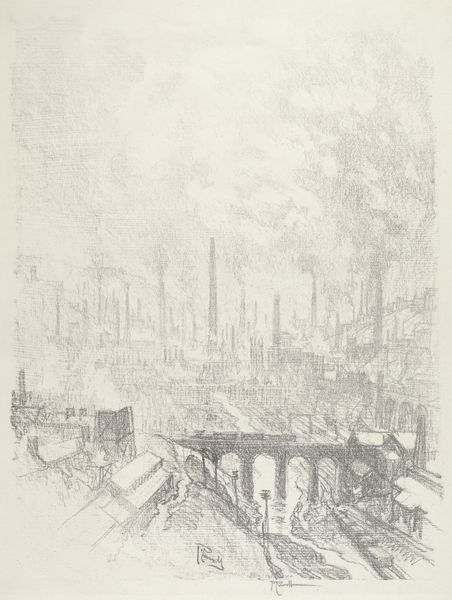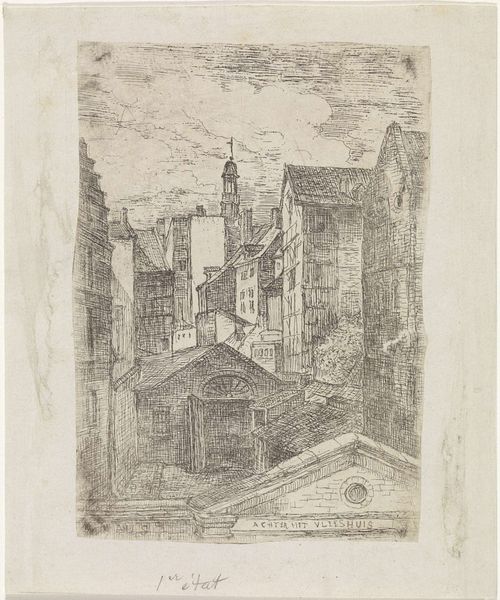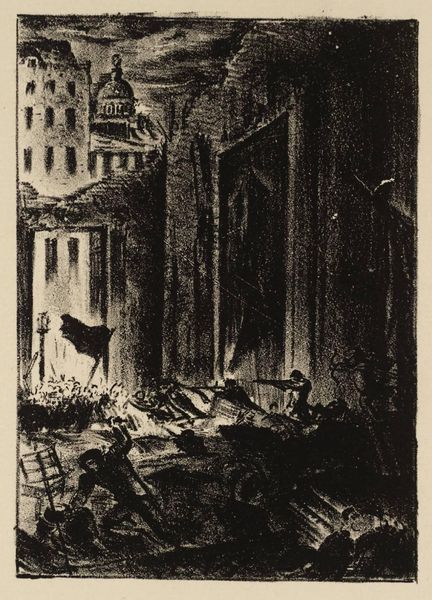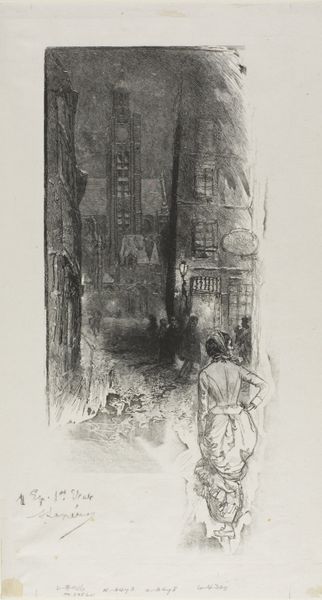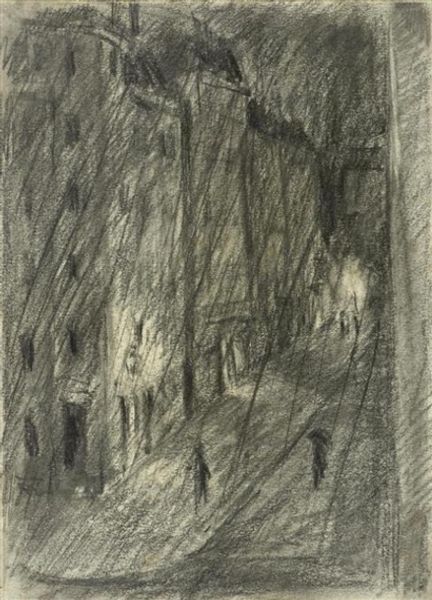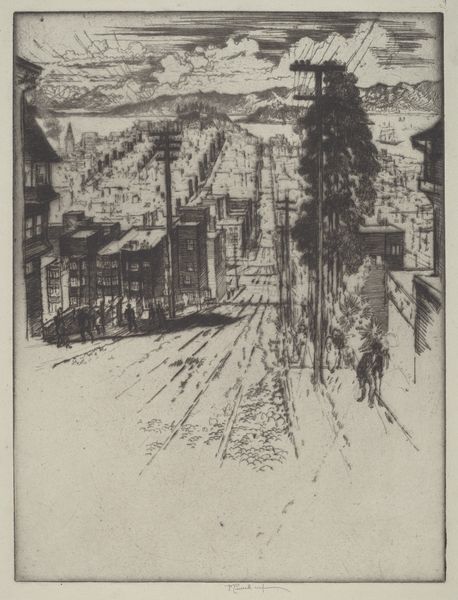
drawing, print, graphite
#
pencil drawn
#
drawing
# print
#
pen sketch
#
pencil sketch
#
pen-ink sketch
#
graphite
#
sketchbook drawing
#
cityscape
Dimensions: image: 306 x 227 mm sheet: 476 x 318 mm
Copyright: National Gallery of Art: CC0 1.0
Curator: Let’s take a look at Theodore Wahl's "Sixth Avenue," rendered with graphite, pen, and ink— a compelling cityscape, don’t you think? Editor: My first thought is cold. Not just visually, but emotionally. There’s a real sense of loneliness humming in this depiction of a city. The grey, the starkness... feels like a silent film. Curator: Indeed, and in its monochrome austerity, the piece echoes anxieties of modern urban life. The city, particularly post-industrial centers, were often sites of displacement and alienation, anxieties represented by the stark composition. The blurred lines could speak to the precarious nature of existence under such systems. Editor: That blurring is doing so much. Is that snow or just…city grime? Maybe it’s both. To me, that's life: beautiful moments layered with daily grit. There’s a bunch of figures scuttling about, heads down, but not really interacting. Curator: That disconnection is vital. Artists during the modernist era frequently portrayed crowds as homogenous entities, stripped of individual identities and autonomy by overwhelming structures, political as much as architectural. The looming buildings, like silent sentinels, dwarf any notion of individuality and freedom. It's social commentary through aesthetics, I'd suggest. Editor: Absolutely. What’s also really powerful is what’s not shown. Where’s the vitality? The vibrancy you associate with urban life? What narratives is Wahl suppressing with his visual choices? It feels really heavy on purpose, don't you agree? Curator: Precisely. By intentionally excluding elements typically associated with urban allure, the artist spotlights societal fractures, implicitly critiquing social orders that promise inclusivity but deliver estrangement. Think about Walter Benjamin’s writing on the flâneur, this aimless stroller observing urban alienation; that lens really shapes how we understand works from this era. Editor: The tallest building dominates and appears dark with almost a sense of impending doom, like a foreboding castle wall in this so-called modern landscape, just weighing on everyone, isn't it? Well, this piece is going to hang around in my mind for a while. I really felt that desolation. Curator: For me too. It encourages an examination of the forces constructing not just cities, but social realities that continue to influence and confine us, provoking necessary introspection.
Comments
No comments
Be the first to comment and join the conversation on the ultimate creative platform.
